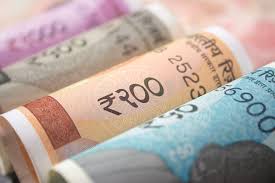
5 years since demonetization, but cash still rules the roost

Cash has remained the preferred mode of payment for the public even if it has been almost five years since the NDA government effected demonetization which goaded the public among many other things to go cashless.
According to data by Reserve Bank of India (RBI), currency with public (cash physically used in transactions between consumers and businesses) touched a record high of ₹28.30 lakh crore for the fortnight ending October 8, 2021. This was 57.48 per cent or ₹10.33 lakh crore higher than ₹17.97 lakh crore reported on November 4, 2016.
Currency with public is calculated by deducting cash available with banks from total currency in circulation (CIC).
The data revealed that currency with public has gone up by 211 per cent from ₹9.11 lakh crore on November 25, 2016.
Also read: Paytm ready to launch Bitcoin offerings if it becomes legal in India
Ahead of Diwali last year, on October 23, 2020, the currency with public rose by ₹15,582 crore. It increased by ₹2.21 lakh crore or 8.5 per cent on a year-on-year basis.
It is to be noted that after the government withdrew ₹500 and ₹1,000 currency notes on November 8, 2016, the currency with public fell to 7.8 lakh crore in January 2017, compared to 17.97 lakh crore on November 4, 2016.
Even though the demonetization in a way arm-twisted the public to fall back on digitized payments initially, a rise in cash in the system was seen, mostly due to a rush for cash by the public in 2020 soon after the government announced lockdown due to the COVID-19 pandemic. In the run up to the lockdown, people withdrew as much cash as possible to be able to seamlessly transact while buying groceries, medicines and other essentials.
Bankers, however, say that increase in CIC doesn’t necessarily reflect the reality. Rather the currency to GDP ratio, which has slumped after demonetization, is what needs to be considered.
The CIC to GDP ratio which was 10-12 per cent till FY20 is expected to rise up to 14 per cent in FY25 due to the cash inflow following the revival of economy post pandemic.
Also read: For Diwali, should you gift yourself some PolicyBazaar, Paytm shares?
However, an RBI study on digital payments maintains that even though digital payments have registered a decent growth in the post-demonetisation era, CIC to GDP ratio has also growth in tandem with the economic growth.
Also, demand for cash has remained high during the festive season with a large number of businesses depending on cash for end-to-end transactions. Also, the fact that about 15 crore of India’s population still doesn’t have bank account also makes cash the primary mode of payment.

